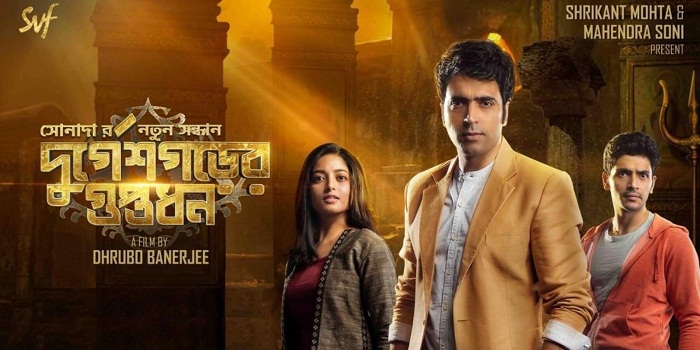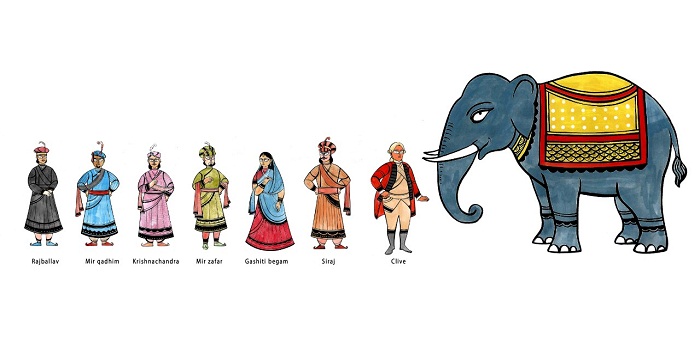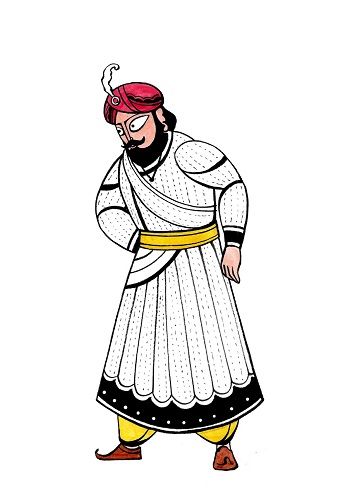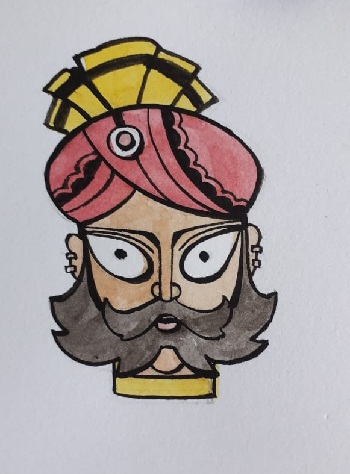Animation has created a stir all over the country and the sector is growing with every passing day and by 2021, the sector is expected to reach a size of Rs. 24.4 billion. This medium is also becoming quite prominent in the regional space.

Recently, Bengali feature film Durgeshgorer Guptodhon depicted the rich history of Bengal through beautiful animation at the beginning, to set the tone of the film. The animated clip narrates the times before and after the Battle of Plassey (1757) where Nawab Siraj ud-Daulah lost to Robert Clive and his army, after being betrayed by the commander of his army, Mir Jafar. The clip focuses on the role of Raja Krishnachandra Roy, (the zamindar of Krishnanagar, Nadia, West Bengal from 1728 to 1782) who supported his friend Jagat Seth to gang up against the Nawab and got a lot of wealth in return, around which the treasure hunt is based upon.
Talking to AnimationXpress about the ideation process to blend history and fiction through animation, director Dhrubo Banerjee mentioned, “As a child my father used to buy me Amar Chitra Katha. I grew up with those illustrations. That was the beginning of my love with history and illustrations. When I decided to create the first ever treasure hunt franchise in Bengal – Guptodhoner Sandhane and then Durgeshgorer Guptodhon, with a focussed approach of combining history of Bengal with its culture and heritage, an acceptable narrative was necessary to address a eight to 80 audience base. Animation was a natural choice in that respect. My six years of experience as the creative director at Reliance Animation also had a role to play. To create an engrossing title narrative where we explain the history as the premise of the story without getting into the cost and production nitigrities of shooting it in live action was also a key factor.”

Durgeshgorer Guptodhon in its quest for real treasure also unearths hidden treasures of Bengal related to its history, culture and heritage. For the team, it was a conscious decision to use the 2D format of illustration style which naturally lends its form into 2D animation. The style lends an old age charm and transports us into the era.
Banerjee added, “An in-depth research on the historic episode of Bengal we were going to depict had to be in place first. A good script was a must. It had to be simple yet informative enough to engross a large audience spectrum. In regional format, time and cost are two very important considerations. So we had to consider an animation format that will be extremely simplified yet impactful. Minimalism was the key that we wanted to adopt as a basic animation technique.”
 Bengal is blessed with a rich canvas of art and art forms. For narrating the historic event, the team adapted the unique art form of ‘Kalighat Pot’ or ‘Kalighat Potochitro’ that belongs to the 18th century. It uses the very common global technique of 2D animation – ‘Thick and Thin’ lines.
Bengal is blessed with a rich canvas of art and art forms. For narrating the historic event, the team adapted the unique art form of ‘Kalighat Pot’ or ‘Kalighat Potochitro’ that belongs to the 18th century. It uses the very common global technique of 2D animation – ‘Thick and Thin’ lines.
“Bengal has amazing artistic talents. So adopting the ‘Kalighat Potochitro’ style was not very difficult. In fact, the true genesis of this technique is attributed to this art form only. So, we decided to keep it for the film. But to put it together as a coherent flow with its detailing needed a specialised studio. Especially where it was pre-decided that every film of this treasure hunt franchise will have a title and end credit animation, it was imperative that a competent studio like Fourth Dimension had to be involved to ensure the quality parameters on a long term basis,” commented Banerjee.
Fourth Dimension is one of the leading studios in Kolkata with a commendable talent pool of both 2D and 3D artists. With their impressive work over the years, they handled the criticality of the animation process flow brilliantly. Led by Rajat Dalui, the founder, Fourth Dimension Studios has a trained workforce of artists who are trained to handle any level of production complexity within strict deadlines.
Dalui informed, “The end to end process flow took about two months. The artworks needed in-depth research of the style of the art form, the characters, their costumes, art direction and also the locations. Everything had to look correct. As a studio, we’re prepared to handle the challenges and deliver the finest both at the national and regional level.”
Animation as a medium is gaining momentum with every passing day and might also become mainstream very soon. Both Dalui and Banerjee have high hopes for that.
“Well at a national level, the talent pool is enormous. The sky is the limit, if we are to comprehend the scope in animation and visual effects in Bengal. We have just started to create films with content that demands specialised expertise. With age new directors and writers coming into the fray, the opportunity is just going to explode in the coming years. We as a studio should be ready with our skill sets to use the opportunity in our favour.
 Also, we are getting very good feedback from the national market too as we have a studio in Mumbai as well. Looking forward, we are entering into the golden period of the content generation where animation and visual effects will be naturally integrated.”
Also, we are getting very good feedback from the national market too as we have a studio in Mumbai as well. Looking forward, we are entering into the golden period of the content generation where animation and visual effects will be naturally integrated.”
Banerjee concluded in the similar line, “I see a huge possibility. Bengal is so rich with its culture, heritage and literature that almost every Bengali is drawn towards the artistic exploration of some kind or other. The Bengal renaissance has seen phenomenal artistic exploration of every possible form. With this lineage and the present generation of kids growing up on animation and visual effects content as their new form of grandparent storytelling, we are truly entering the most promising phase for animation in regional markets. Especially in Bengal, the ready availability and connect with fantasies and folktales in literature is second to none. If any regional market in India is truly ready for mainstream animated content in films, its Bengal. I am already considering to put together a full length animated feature film in Bengali, considering that I have belonged to the fraternity for a pretty long time, I guess it’s a natural extension for me.”
Well, we’re keeping our fingers crossed and hope good animation films get all the attention they deserve!

